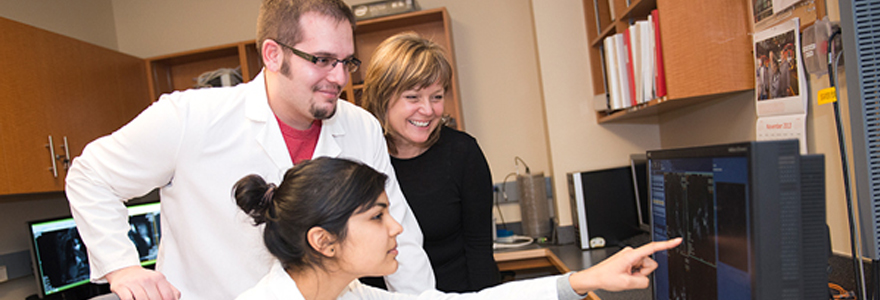Research

Accelerating Medical Discovery
Robarts Research Institute within the Schulich School of Medicine & Dentistry at Western University has a mission to accelerate medical discovery. Through a powerful integration of basic and clinical research, we are driving major advances that have an impact on many of today’s most devastating diseases.
Robarts has a long history of fostering an interdisciplinary approach to research enabled by state-of-the-art facilities, technologically advanced core laboratories, and more than 600 committed scientists, staff and research trainees. It is one of the country’s leaders in translational research and commercialization of new technologies.
We conduct science that looks at everything from the molecular and genetic basis of disease right through to the development of pharmaceuticals and technologies, all of which have an impact on you and your health.
From the bench to the bedside: Our research is changing lives

Dr. Ting-Yim Lee’s Perfusion CT technology, which has been licensed worldwide, helps doctors immediately track blood flow to the brain following a stroke. Stroke patients around the world are benefitting every day from this technology.
Scientist and physician, Dr. Robert Hegele, was the first in the world to identify the genetic basis for more than a dozen different human diseases and is committed to bringing the research that he does in his lab directly to his patients.
The work of Dr. Murray Huff has led to a breakthrough discovery that a substance in tangerines called Nobiletin prevents obesity and high blood fats, and offers protection against type 2 diabetes and atherosclerosis, the cause of most heart attacks and strokes.
Dr. Arthur Brown and his team are boosting nerve growth in the injured spinal cord by enhancing the nervous system’s natural ability to rewire damaged circuits.
Imaging scientist Dr. Aaron Fenster has generated more than 25 patents on 3D imaging systems being used around the globe to improve diagnosis of rectal and prostate cancers and carotid artery disease.
Robarts scientists are using novel MRI lung imaging methods to show that ventilation defects can predict respiratory disease, aiding in the advancement of diagnosis and treatment.
Primary research themes

Collaboration and integration are central to all of the work undertaken at Robarts. This allows our scientists to explore new directions in health care and inspires innovation with research into a wide range of diseases including heart disease, cancer, Alzheimer’s disease, amyotrophic lateral sclerosis (ALS), epilepsy, Parkinson’s disease, spinal cord and brain injury.
Robarts is a leader in the development and implementation of leading-edge technologies including advanced imaging to tackle some of the greatest health challenges facing Canadians. At the Institute, we employ innovative, multidisciplinary approaches to the study of cardiovascular and neurological diseases, as well as cancer detection and treatment. Identifying collaborative partners (from both academia and the private sector) leverages the Institute’s strengths and increases the impact of our research. This dynamic environment also provides an ideal milieu for training of the next generation of scientists.








